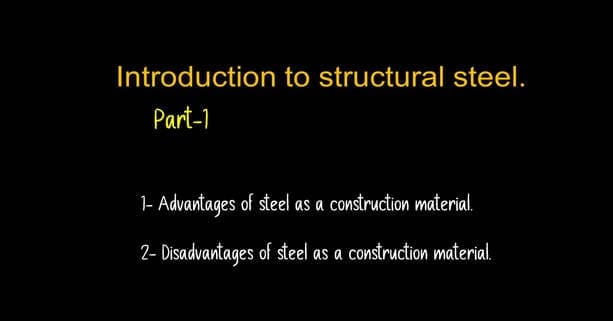Introduction to Structural Steel.
The item included in this post will be the advantages, and disadvantages of structural steel.
The content of the post.
We are going to talk about a new subject, which is structural steel. We need to discuss several points. The first point is about the advantages and disadvantages of using steel as a construction material.
The second item is the relation between the stress and Strain of steel.
The next items will be discussed in the next posts.
The third item is about the different values of Yield stress for steel.
The fourth item is about the steel compositions what are the different steel grades?
The last item is about the different steel shapes and How we can estimate a given steel section. This is the content of the lecture as shown in the next slide image.
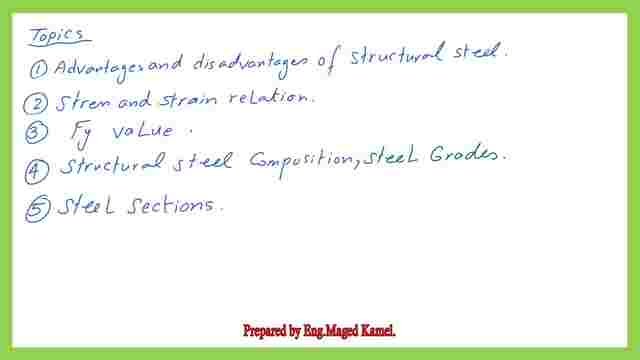

Structural steel and its advantages as a construction material.
We begin by discussing the advantages of structural steel. The great strength is the initial benefit.
Considering its lightweight nature, steel has the advantage of being able to support heavier loads. In comparison to concrete, steel has a larger unit weight.
For bridges and tall buildings and constructions built on shoddy foundations, to paraphrase.
That was Steel’s advantage. Its weight is more than that of any other building material.
Consistency is the second benefit. Elasticity is steel’s third benefit. Steel structure moment of inertia can be precisely calculated.
The three different steel benefits are displayed in the next slide.
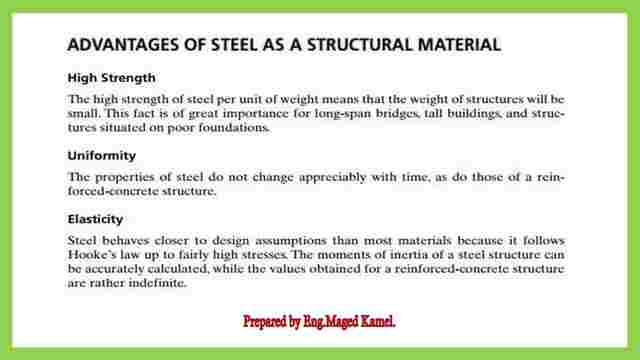

Performance is a steel structure’s fourth benefit. I quote: “Steel frames with proper maintenance will last a lifetime.” Thus, with proper upkeep, steel constructions can last longer.
I quote: “Under certain circumstances, research on some of the more recent steels suggests that.” Painting is not necessary.
The next benefit is that the material has the quality of ductility that certain materials are capable of withstanding significant deformation under high tensile pressures without failing. After a significant quantity of elongation, failure will happen.
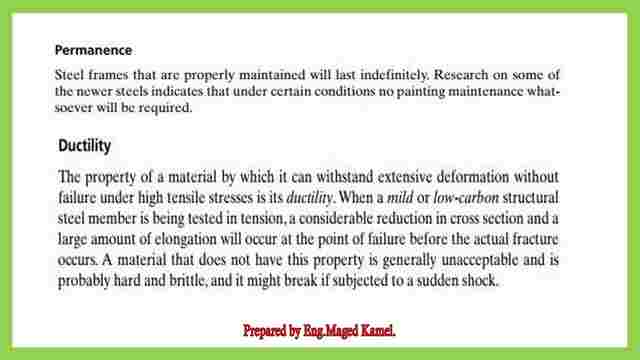

Disadvantages of structural steel as a construction material.
The first disadvantage is corrosion. Most steels are susceptible to corrosion when freely exposed to air and water and, therefore, should be painted periodically.
Weathering steels are a family of low-carbon steels with additional alloying elements mixed in with carbon and iron atoms.
These alloying elements give weathering steel better strength and more corrosion resistance than typical low-carbon steel grades, however, suitable applications tend to reduce the cost of maintenance.
The next disadvantage is the fireproofing cost.
The strength of steel is affected by the fire.
I quote, that many disastrous fires have occurred in empty buildings where the only fuel for the fires was the building themselves. Steel is an excellent heat conductor.
Additional disadvantages of steel.
Non-fireproofed steel members may transmit enough heat from a burning section.
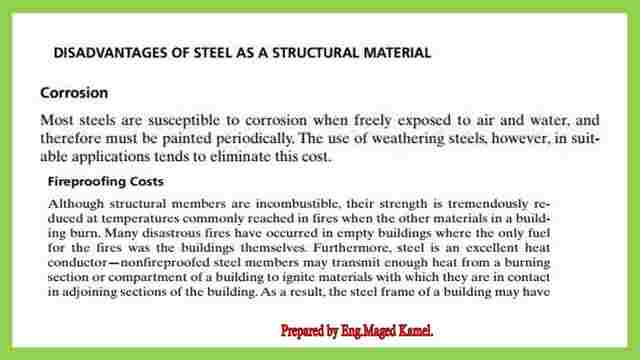

The susceptibility of steel to buckling is its next disadvantage.
Two elements are taken into consideration for buckling: the length and the radius of gyration.
One can estimate how slender the member is. The slenderness ratio rises as the buckling length decreases and the cross-section shrinks.
By adding bracing to the columns, more steel is added to make the steel columns stiffer and prevent them from buckling. Steel’s fatigue is the next drawback.
Steel should not be fatigued since it reduces strength. A high number of stress reversals is fatigue.
I quote: “Tenseness contributes to fatigue issues.” Many different variations of tensile tension can cause fatigue. Another drawback of steel is its brittle fracture.
This brittle fracture happens where there is a concentration of stress.
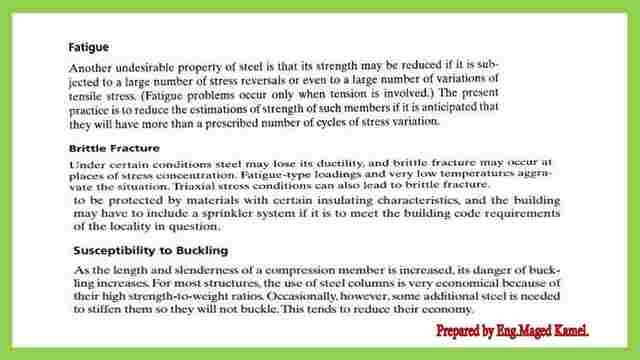

This is the Pdf used in this post.
The next post will discuss the relationship between stress and strain for steel.
This is a link to a very good reference, A Beginner’s Guide to Structural Engineering

